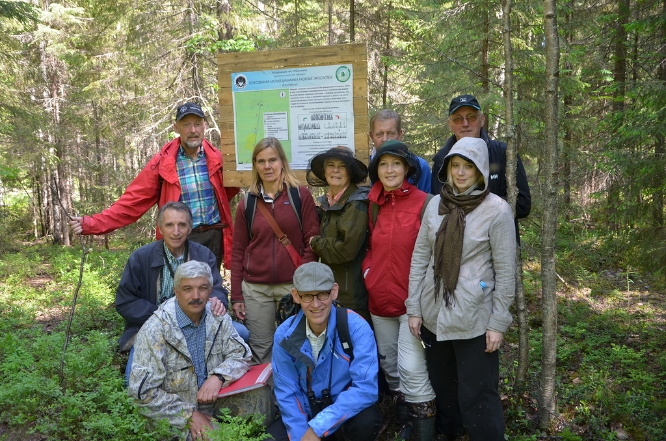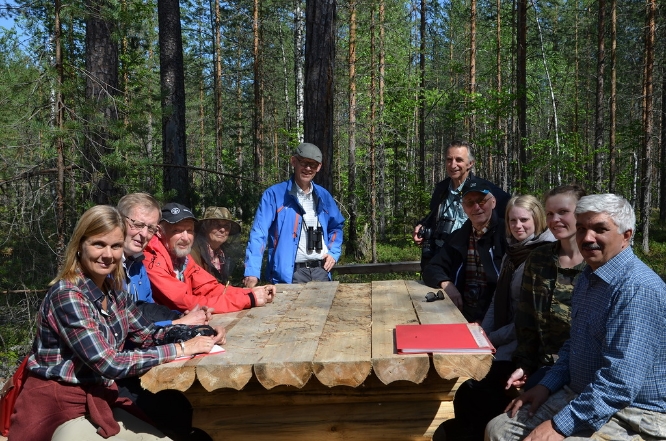The Swedes Have Observed the Natural Forest Dynamics in the Komi Model Forest
A group of representatives of the Royal Swedish Academy of Agriculture and Forestry has visited the demonstration sites of the Komi Model Forest within the framework of an international seminar organized by the Syktyvkar Forest Institute.
The Royal Swedish Academy of Agriculture and Forestry is a network organization established to conduct a dialog and an independent analytic activity in such public interest areas as the development of the forestry and agriculture, water management, fishery, deer breeding, gardening, environment protection… The Academy, which is an independent self-governing organization, consists of more than 500 Swedish and foreign members including both the people of science, practicians, and executives – skilled professionals from different sectors of the society able to carry on a constructive dialog and implement joint projects.
The group arrived to Komi also consisted both of the staff scientists, representatives of educational institutions, forest owners, and forest business. Having arrived to our republic in order to learn about the peculiarities of the taiga forest use in Komi, the Swedes have got acquainted with the natural forest dynamics of the taiga forests with great interest. The Silver Taiga Foundation Director Yury Pautov has demonstrated them different types of this dynamics both in the disturbed and undisturbed forest ecosystems on the Model Forest routes.
The guest were especially surprised and interested in the natural forest fire dynamics, which they could observe in the Model Forest and which is almost lost in Sweden due to the high intensity of the forest management and efficient fire-fighting system. It is no coincidence that, according to the Swedish national FSC standard, the forest owners are obliged to provide artificial burning out on 5 percent of the felling area in order to simulate a natural fire dynamics.
The participants of the excursion have asked many questions and actively disputed about the ways to preserve the biodiversity and forest ecosystems in the landscape. The very idea of the Model Forest has arisen particular interest. The guests have asked how it functions, how the partnership is ensured, etc. In Sweden more than 60 percent of the forests are privately owned and, in their opinion, it’s much more difficult to organize such partnership in such conditions than when the forests are in public or municipal ownership.

Members of the Royal Swedish Academy of Agriculture and Forestry together with Y.A. Pautov during the excursion to the Model Forest

Members of the Royal Swedish Academy of Agriculture and Forestry together with Y.A. Pautov during the excursion to the Model Forest
Valentina Semyashkina,
The photo is made by Natalia Sedusova
Translated by Irina Sokolova

